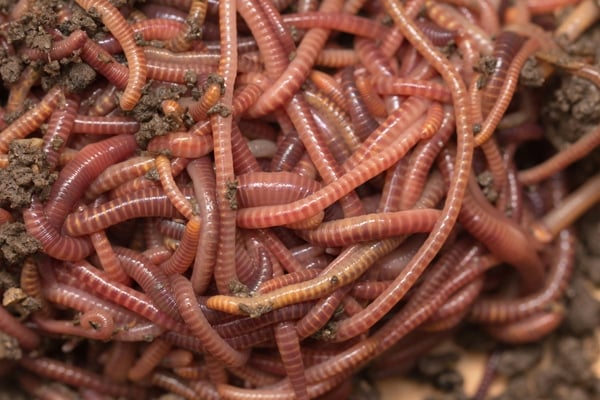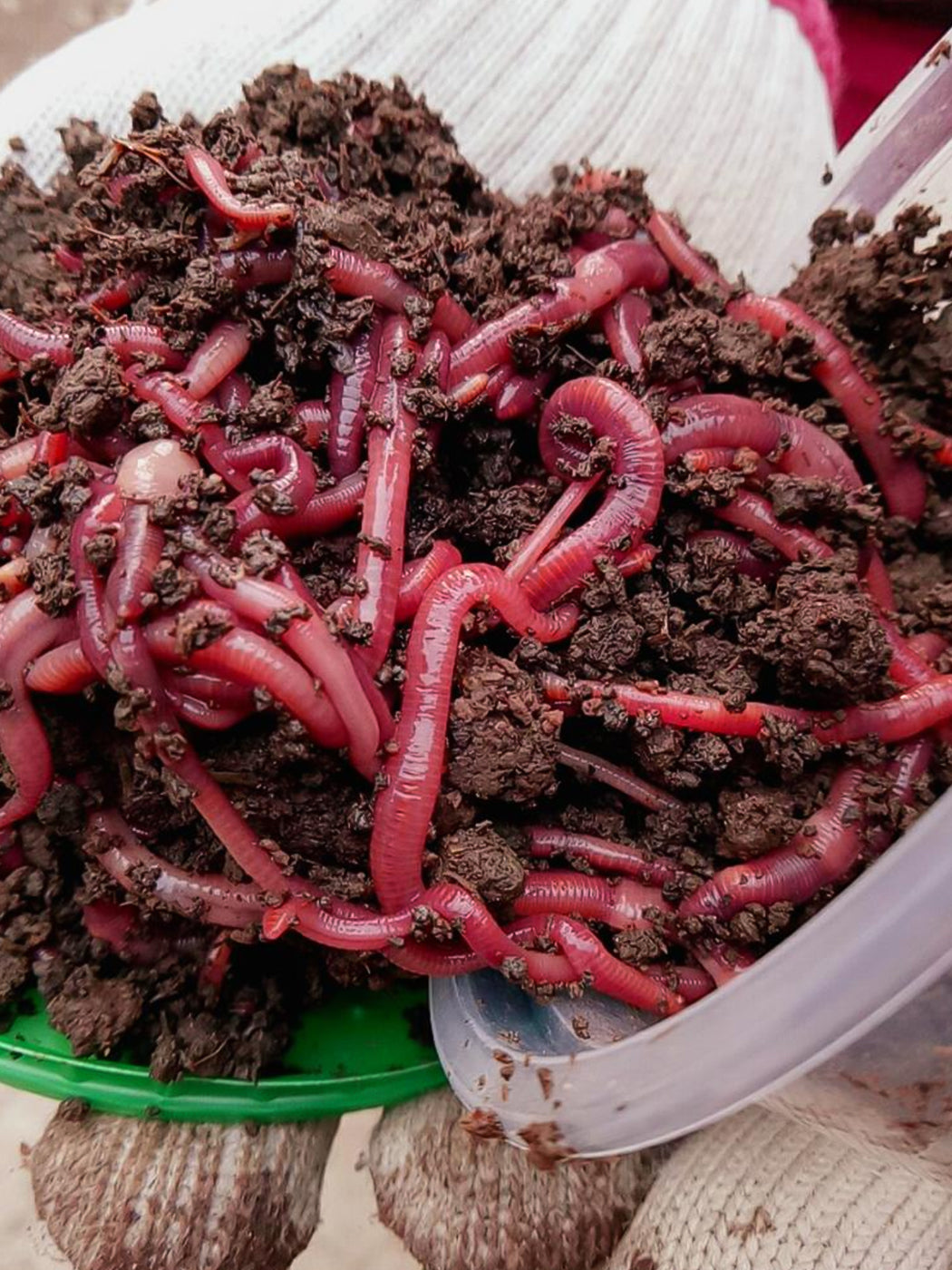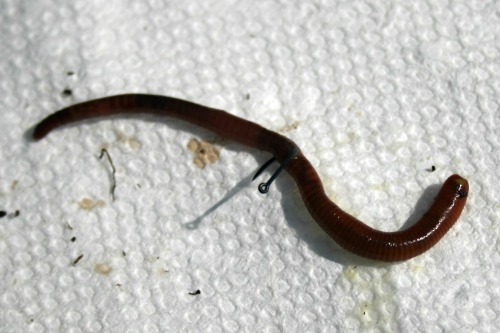Lake Hickory Bait Provides the Solutions You Need for a Perfect Lawn
Lake Hickory Bait Provides the Solutions You Need for a Perfect Lawn
Blog Article
Red Wigglers: The Unsung Heroes of Organic Waste Recycling
Red wigglers, or Eisenia fetida, serve as crucial representatives in the natural waste reusing procedure, changing disposed of products into valuable vermicompost. As the globe progressively seeks options to deal with waste build-up and improve agricultural productivity, recognizing the function of these worms ends up being necessary.
What Are Red Wigglers?
The remarkable durability of red wigglers, clinically referred to as Eisenia fetida, underscores their critical function in organic waste recycling. These small, reddish-brown earthworms are typically located in breaking down raw material, such as garden compost stacks and manure lots. Lake Hickory Bait. Unlike other earthworm varieties, red wigglers flourish in nutrient-rich settings and are highly effective at damaging down organic products, making them important for vermicomposting

(Red Wiggler Express)In enhancement to their role in waste reduction, red wigglers contribute to dirt wellness by boosting dirt structure and aeration through their tunneling activities (Lake Hickory Bait). Their existence in composting systems not just boosts disintegration prices but also promotes a sustainable technique to lose monitoring, highlighting their importance in ecological conservation initiatives
Advantages of Composting With Worms
Composting with worms, especially red wigglers, uses various advantages that improve both waste administration and soil health and wellness. These worms successfully damage down organic waste, converting it into nutrient-rich vermicompost that improves dirt. This procedure speeds up decay, enabling a faster recycling of kitchen scraps and various other natural materials compared to traditional composting approaches.
In addition, the vermicompost created by red wigglers is including useful microbes, which assist improve dirt framework, aeration, and dampness retention. This boosts the general health and wellness of plants, promoting strenuous development and enhanced returns in yards and agricultural setups. In addition, using worms in composting reduces the manufacturing of greenhouse gases, such as methane, adding to a more lasting waste administration system.

How to Start Vermicomposting
Establishing a vermicomposting system is an uncomplicated procedure that can generate substantial benefits for both waste management and soil enrichment. To start, select a suitable container, such as a plastic bin or wooden box, with sufficient air flow openings to make sure correct air movement. The measurements need to preferably be about 2 feet by 3 feet, permitting enough room for the worms to grow.
Following, prepare bed linens product, which can include shredded paper, cardboard, or coconut coir. This bed linen must be dampened to produce an appropriate habitat for the worms. Once the bedding remains in area, present red wigglers (Eisenia fetida) right into the bin, normally around one extra pound of worms for each square foot of surface area.
Following the placement of worms, include natural waste, such as fruit and veggie scraps, coffee grounds, and crushed eggshells. Avoid including dairy products, meat, or oils, as these can produce odors and bring in parasites. Place the container in a shaded, temperature-controlled area to maintain optimum problems for worm activity. With these actions, you will successfully start a vermicomposting system that contributes to lasting waste monitoring and enhances your soil.
Keeping a Healthy Worm Container
(Lake Rhodhiss Bait)Keeping a worm container flourishing calls for routine focus and care to make certain the health and wellness of the red wigglers and the performance of the composting process. Correct maintenance starts with monitoring the wetness degrees; the bin needs to be damp however not waterlogged. A great regulation of thumb is to preserve an uniformity comparable to a wrung-out sponge.
Aeration is critical. Gently blending the bed linens and food scraps every few weeks avoids compaction and makes certain that all worms have access to oxygen. Furthermore, it is vital to feed the worms appropriately. A balanced diet plan of vegetables and fruit scraps, coffee premises, and crushed eggshells need to be provided in moderation to prevent overfeeding, which can bring about odors and pests.
Temperature level regulation is another essential facet. Red wigglers thrive in a variety of 55 to 77 levels Fahrenheit. If the container comes to be too hot or cold, the worms may become stressed - Lake Hickory Bait. Periodically check for signs of health, such as worm populace development and the visibility of healthy and balanced castings. By vigilantly handling these elements, one can maintain a durable and effective worm container.
Effect On Sustainable Living
The successful upkeep of a worm container not only benefits the wellness of red wigglers however likewise contributes dramatically to lasting living methods. By recycling natural waste, such as kitchen area scraps and yard particles, red wigglers assist divert significant amounts of product from garbage dumps. This reduction in waste not just reduces greenhouse gas emissions yet likewise minimizes the ecological concern connected with waste administration.
In addition, the castings generated by red wigglers act as a nutrient-rich natural fertilizer, enhancing dirt health and advertising plant growth. This all-natural alternative to chemical plant foods supports sustainable farming and gardening techniques, decreasing dependence on synthetic inputs that can damage communities. In addition, worm composting promotes recognition of waste management, urging individuals and neighborhoods to take on more lasting routines.

Final Thought
In summary, red wigglers serve as find essential factors to natural waste recycling through their reliable decay of natural products. By incorporating vermicomposting right into waste administration methods, individuals and communities can dramatically minimize waste while promoting environmental sustainability.
Report this page